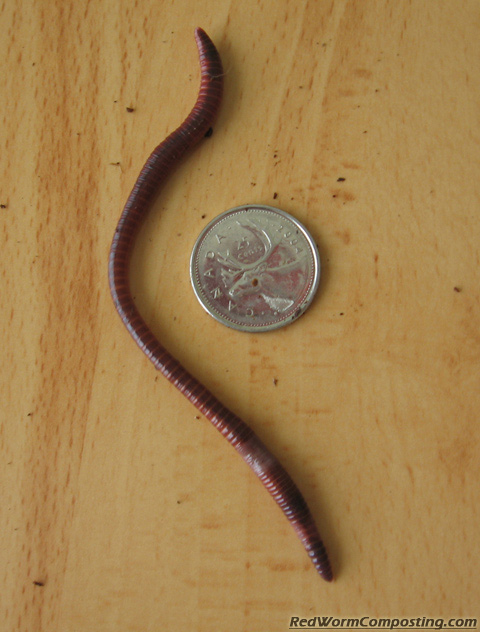Lake Hickory Bait: A Trusted Provider for Quality Bait and Tackle
Lake Hickory Bait: A Trusted Provider for Quality Bait and Tackle
Blog Article
Red Wigglers: The Unsung Heroes of Organic Waste Recycling
Red wigglers, or Eisenia fetida, offer as crucial agents in the natural waste recycling process, changing discarded products into useful vermicompost. As the world significantly seeks services to deal with waste buildup and boost agricultural productivity, recognizing the duty of these worms becomes essential.
What Are Red Wigglers?
The exceptional durability of red wigglers, medically known as Eisenia fetida, underscores their crucial function in organic waste recycling. These tiny, reddish-brown earthworms are usually discovered in decaying raw material, such as compost heap and manure loads. Lake Hickory Bait. Unlike other earthworm species, red wigglers thrive in nutrient-rich atmospheres and are very reliable at damaging down natural products, making them important for vermicomposting

(Red Wiggler Express)In enhancement to their function in waste decrease, red wigglers add to soil health and wellness by enhancing dirt structure and aeration with their burrowing tasks (Lake Hickory Bait). Their presence in composting systems not just improves decomposition prices however additionally promotes a lasting strategy to squander management, highlighting their relevance in ecological conservation efforts
Benefits of Composting With Worms
Composting with worms, especially red wigglers, provides many advantages that boost both waste management and soil health and wellness. These worms successfully damage down natural waste, transforming it right into nutrient-rich vermicompost that enriches soil. This process speeds up decay, enabling a quicker recycling of kitchen scraps and other organic materials compared to conventional composting techniques.
Furthermore, the vermicompost generated by red wigglers is including valuable microorganisms, which aid enhance soil structure, oygenation, and dampness retention. This boosts the general health and wellness of plants, promoting strenuous growth and raised yields in gardens and farming settings. Furthermore, using worms in composting reduces the manufacturing of greenhouse gases, such as methane, adding to a much more sustainable waste management system.

How to Beginning Vermicomposting
Establishing a vermicomposting system is a simple process that can produce substantial advantages for both waste monitoring and dirt enrichment. To begin, select an appropriate container, such as a plastic bin or wood box, with adequate ventilation holes to make certain appropriate air flow. The measurements ought to ideally be around 2 feet by 3 feet, allowing adequate area for the worms to flourish.
Following, prepare bed linen product, which can include shredded paper, cardboard, or coconut coir. This bedding should be dampened to produce an appropriate habitat for the worms. When the bedding remains in location, present red wigglers (Eisenia fetida) right into the bin, typically around one pound of worms for every square foot of surface.
Complying with the placement of worms, include organic waste, such as fruit and veggie scraps, coffee premises, and smashed eggshells. With these steps, you will properly start a check this vermicomposting system that adds to sustainable waste monitoring and enhances your dirt.
Maintaining a Healthy And Balanced Worm Bin
(Lake Rhodhiss Bait)Keeping a worm container flourishing needs regular interest and like ensure the health of the red wigglers and the performance of the composting procedure. Correct upkeep starts with monitoring the wetness levels; the bin should perspire yet not soaked. A good regulation of thumb is to preserve a consistency similar to a wrung-out sponge.
Gently mixing the bed linen and food scraps every couple of weeks stops compaction and makes certain that all worms have access to oxygen. Additionally, it is crucial to feed the worms properly.
If the bin comes to be also warm or cold, the worms might end up being worried. By faithfully taking care of these aspects, one can keep a robust and efficient worm container.
Influence On Lasting Living
The effective upkeep of a worm bin not only benefits the health and wellness of red wigglers but also contributes dramatically to lasting living practices. By reusing natural waste, such as kitchen area scraps and yard debris, red wigglers assist draw away considerable quantities of product from garbage dumps. This decrease in waste not only decreases greenhouse gas discharges yet additionally lessens the environmental worry related to waste monitoring.
In addition, the castings created by red wigglers function as a nutrient-rich organic fertilizer, enhancing soil health and advertising plant development. This all-natural alternative to chemical plant foods sustains lasting agriculture and gardening practices, decreasing reliance on synthetic inputs that can harm ecosystems. In addition, worm composting cultivates awareness of waste monitoring, encouraging people and communities to embrace even more sustainable habits.

Conclusion
In recap, red wigglers serve as vital contributors to natural waste reusing through their reliable decay of natural materials. By integrating vermicomposting right into waste management approaches, people and communities can considerably reduce waste while advertising environmental sustainability.
Report this page